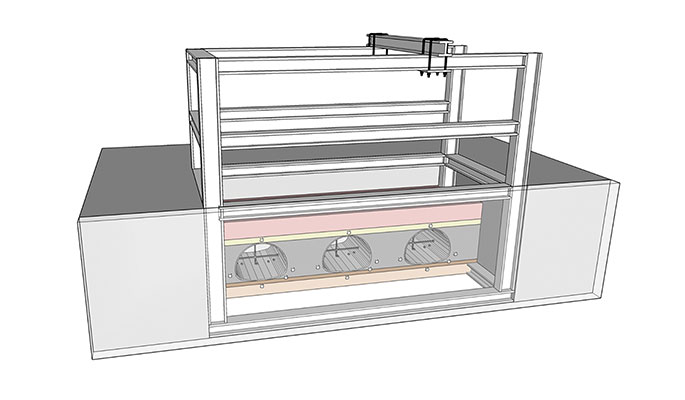August 2018 Vol. 73 No. 8
Rehabilitation
Update on Structural Design Methodology for Spray Applied Pipe Liners

To reduce emergency projects and impacts to the traveling public, departments of transportation (DOTs) can use spray-applied pipe linings (SAPLs) to renew deteriorated gravity stormwater conveyance conduits and culverts, provided they are discovered prior to loss of soil-structure interaction. An SAPL is a standalone application that inhibits further deterioration and can structurally renew severely damaged culvert and drainage structures. The primary materials used for SAPL generally fall into two broad categories of cementitious materials and polymers such as epoxies, and polyurethanes and polyureas.
The primary objective of this two-year study is to develop design equations for structural renewal of gravity stormwater conveyance culverts with both cementitious and polymer materials. Both circular and arch shapes with spans larger than 36 inches will be considered. The design equations will use loadings as detailed in the American Association of State Highway Transportation Officials’ (AASHTO’s) Load and Resistance Factor Design (LRFD) Bridge Design Specifications. Additionally, practical limitations on the use of these design equations will be included.
As part of this research, a soil box testing is planned for late summer at CUIRE laboratory at the University of Texas at Arlington. This testing program will simulate the 32-kip wheel load condition under the pavement with a shallow cover on the culvert. The SAPL thicknesses currently selected for cementitious materials are 0.5, 1.0 and 2.0 inches; for polymer materials, thicknesses are 0.25, 0.5 and 1.0 inches. So far, several vendors with cementitious, geo-polymer, and polymer SAPLs have expressed an interest to participate in this testing.
These vendors include A.W. Cook, AP/M Permaform, CentriPipe, Epoxytec, Milliken, Raven Lining Systems, Sprayroq, The Strong Company, Standard Cement and Vortex. Some have already signed up or have gone through a laboratory testing program established through the AASHTO’s National Transportation Product Evaluation Program (NTPEP) Technical Committee (TC) for SAPLs in an effort to implement this new technology. More vendors are expected to join the program. For more information on NTPEP, visit ntpep.org/Pages/SAPL.aspx.
Other aspects of this project include a national DOT survey, field data collections through site visits to actual SAPL installations, considerations for impact of corrugations and additional reinforcement, development of performance specifications, and computational modeling through finite element analysis. The project is scheduled to be completed in December 2019.
To participate in this unique project, DOTs and vendors can contact Jeffrey Syar, P.E., administrator, Ohio DOT Office of Hydraulic Engineering at (614) 275-1373 or Jeffrey.Syar@dot.ohio.gov; or Dr. Mo Najaf, principal investigator for this project, at (817) 272-9177 or najafi@uta.edu.




Comments